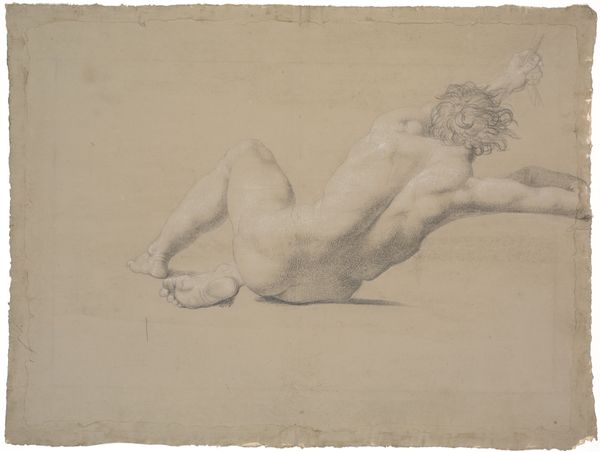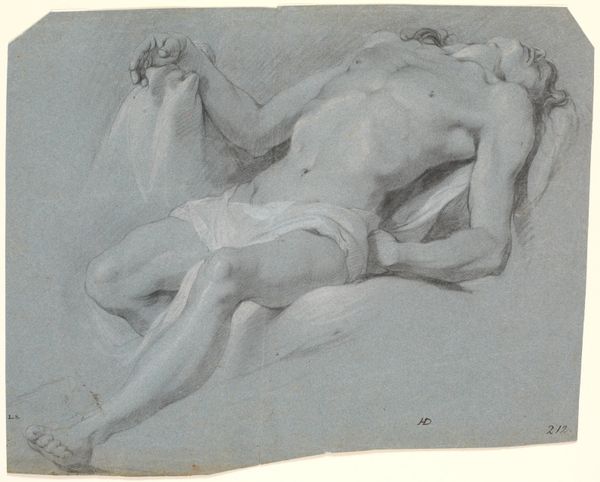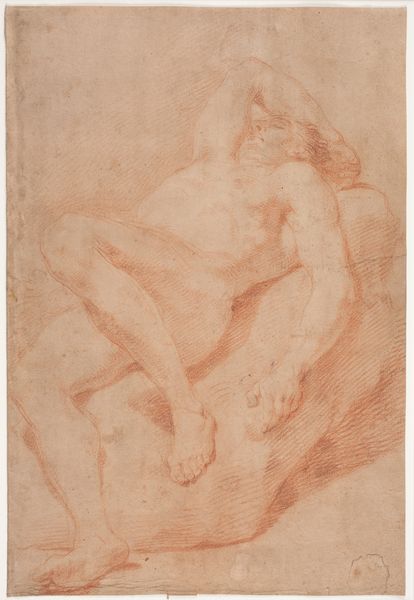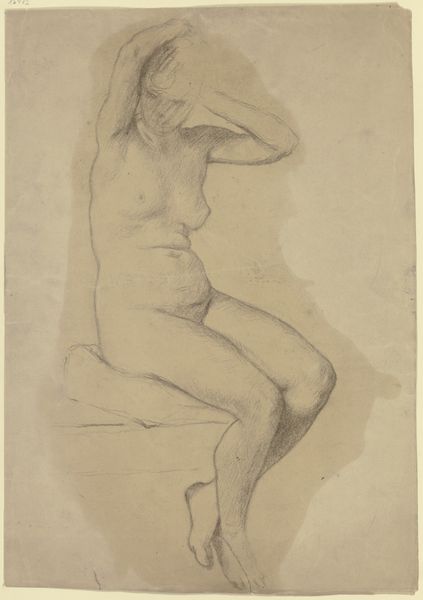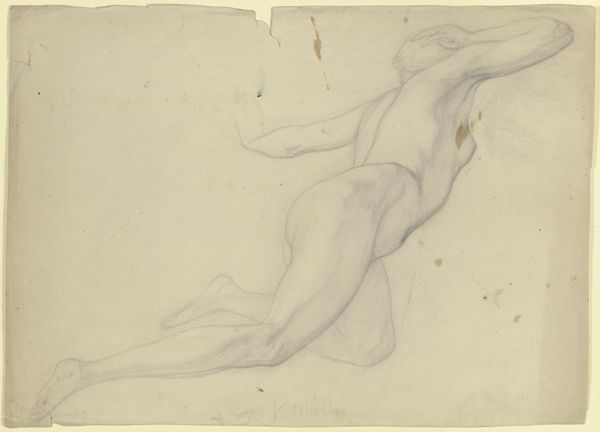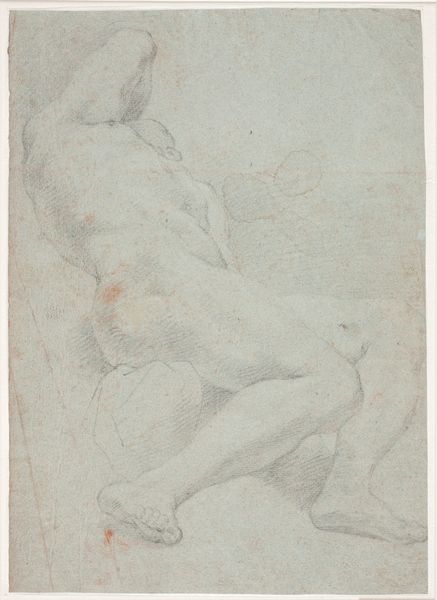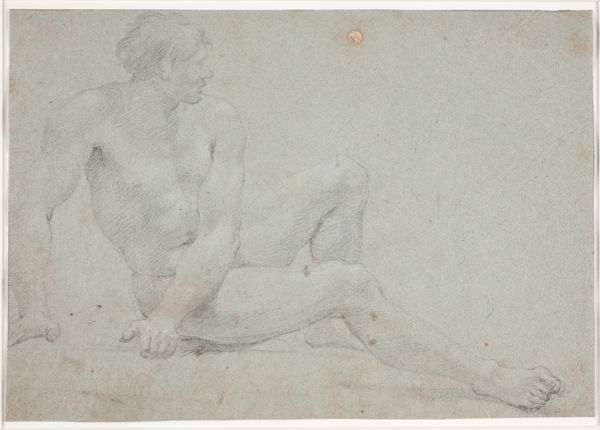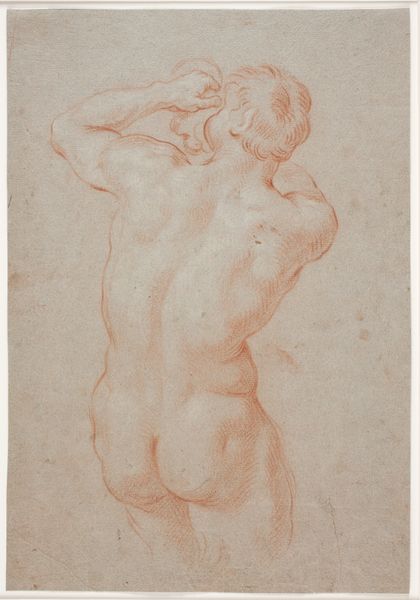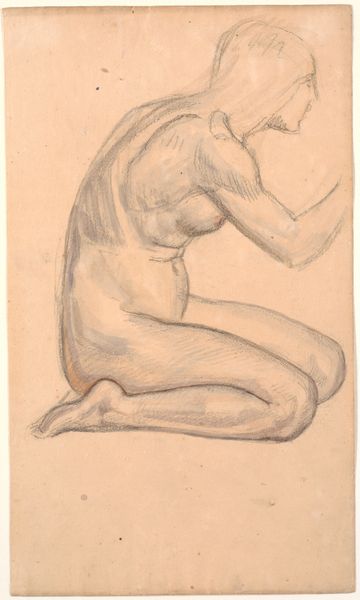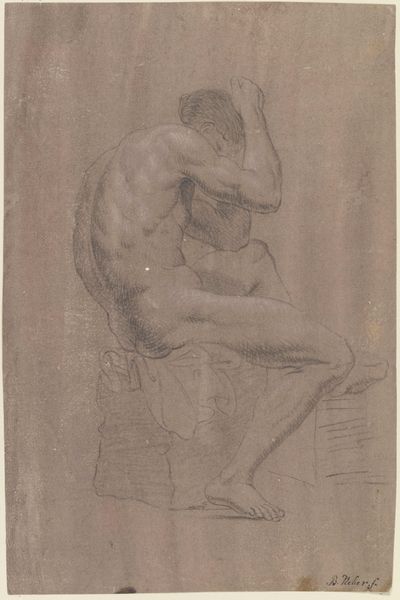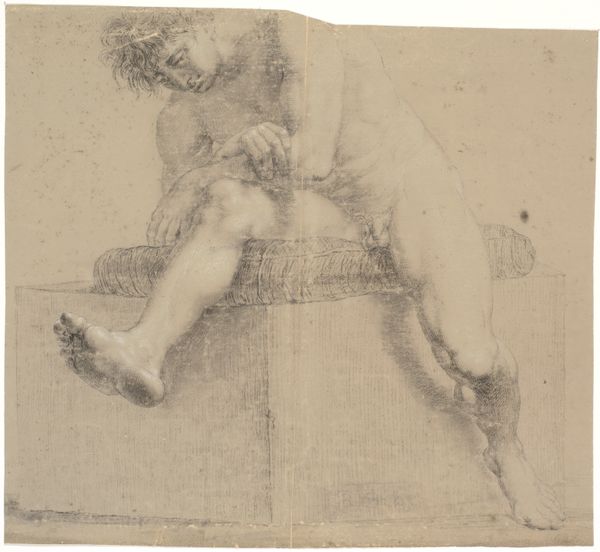
Halvtliggende model på pude. Mod venstre. Hovedet hviler på højre arm, støttet på en plint. Venstre arm over hovedet. Benene bøjet i knæleddet. Venstre ben over højre 1778 - 1809
0:00
0:00
drawing, dry-media, pencil
#
drawing
#
classical-realism
#
charcoal drawing
#
form
#
dry-media
#
pencil drawing
#
pencil
#
academic-art
#
nude
#
realism
Dimensions: 448 mm (height) x 567 mm (width) (bladmaal)
Curator: Here we have a charcoal drawing titled "Halvtliggende model på pude. Mod venstre. Hovedet hviler på højre arm, støttet på en plint. Venstre arm over hovedet. Benene bøjet i knæleddet. Venstre ben over højre," which translates roughly to "Half-lying model on a pillow. To the left. The head rests on the right arm, supported on a plinth. Left arm over the head. The legs are bent at the knee joint. Left leg over right." Editor: Immediately, there's a sense of classical repose but also discomfort. The pose looks deliberately contorted, almost pained. Is that intentional? Curator: I believe so. Dating from the late 18th or early 19th century, and made by an anonymous artist, it appears to have been created as an academic study. Consider the implications of the male gaze in the creation and subsequent interpretation of art depicting the nude human form. Editor: The body language also evokes something quite internal and the artist's interest in realism is palpable. Even the shadows on the figure carry so much feeling! Are there artistic or philosophical trends of this era that might speak to those feelings? Curator: This drawing reflects a period grappling with shifting power dynamics. Looking at the depiction of the human form here, can we view the subject's vulnerability through the lenses of postcolonial theory? I wonder, who were the power structures that dictated how bodies, especially those perceived as othered, were represented? Editor: Perhaps there are hidden universal themes that have found voice over different cultures. Considering this form, it’s almost a foetal position. Does it hint at protection and new beginnings and are there universal archetypes present within the composition, suggesting more of humanity's symbolic story is being depicted? Curator: The artist employs sharp strokes of charcoal to define the muscular contours and bone structures. Academic art's very methodology highlights the power of objective observation in dissecting a subject and reinforces traditional values around scientific empiricism in opposition to more subversive viewpoints that the subject has the agency to resist or disrupt power. Editor: Well, it also gives voice to humanity's search for wholeness or an origin to go back to through archetypes in our common visual story. Despite what we discussed earlier about the power relationship with artist, maybe the artist has also achieved what the artist wanted to achieve and that should not be lost with too much criticality. Curator: It makes you question art and freedom of representation through different cultural experiences. Editor: The journey the symbol takes from the drawing's origins is a story for further pondering.
Comments
No comments
Be the first to comment and join the conversation on the ultimate creative platform.

